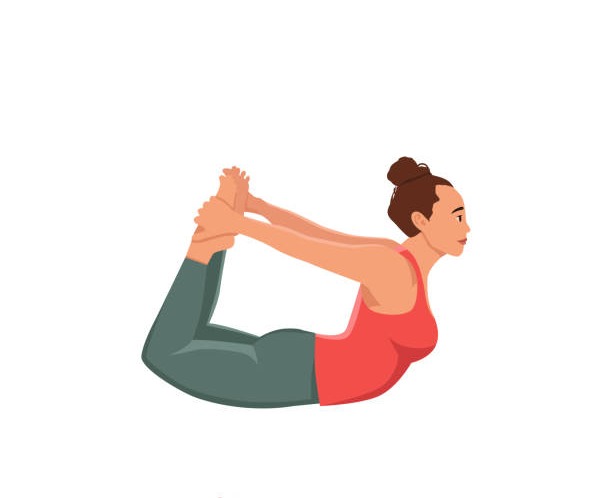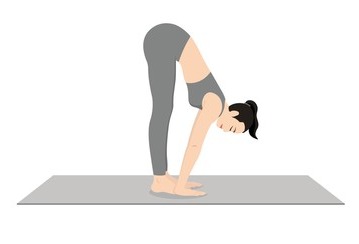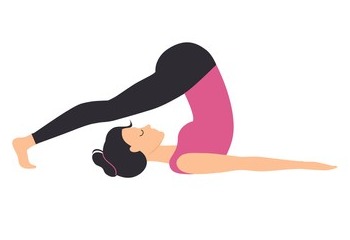Unlock the Power to Control Diabetes Naturally with Yoga
5 minuteRead

Living with diabetes can be challenging, but there are various lifestyle modifications that can help manage the condition effectively. One such powerful tool is yoga, a centuries-old practice originating from India. Yoga not only promotes physical well-being but also enhances mental and emotional health. In this article, you will know how yoga can play a significant role in controlling diabetes and regulating blood sugar levels.
Understanding Diabetes
Before delving into the benefits of yoga for diabetes, it's essential to have a basic understanding of the condition. Diabetes is a chronic metabolic disorder characterized by high blood sugar levels. There are two primary types: type 1 diabetes, which is an autoimmune condition, and type 2 diabetes, which is usually associated with lifestyle factors.
The Role of Yoga in Controlling Diabetes
Yoga offers a holistic approach to managing diabetes by addressing both the physical and psychological aspects of the condition. Regular yoga practice can improve insulin sensitivity, enhance blood circulation, and reduce stress levels, all of which contribute to better blood sugar control.
Benefits of Yoga for Diabetes
Here are a few statistics and findings that support the positive impact of yoga on diabetes:
1. Improved Blood Sugar Control: A study published in the Journal of Clinical and Diagnostic Research found that regular yoga practice led to a significant decrease in fasting blood sugar levels among individuals with type 2 diabetes.
2. Enhanced Insulin Sensitivity: Research published in the Journal of Diabetes and Metabolic Disorders showed that practicing yoga for 12 weeks resulted in improved insulin sensitivity and decreased insulin resistance in individuals with type 2 diabetes.
3. Reduced Stress Levels: Chronic stress can impact blood sugar levels. A study published in Diabetes & Metabolic Syndrome: Clinical Research & Reviews revealed that yoga interventions led to reduced stress levels and improved psychological well-being among individuals with diabetes.
4. Weight Management: Yoga can contribute to weight loss and weight management, which is crucial for diabetes control. A study published in Complementary Therapies in Medicine found that yoga interventions helped reduce body weight, waist circumference, and body mass index (BMI) in individuals with type 2 diabetes.
5. Improved Lipid Profile: Yoga has shown positive effects on lipid profiles, which are important for cardiovascular health. A study published in the International Journal of Yoga Therapy found that regular yoga practice improved lipid profiles, including reduced levels of total cholesterol, LDL cholesterol, and triglycerides, in individuals with type 2 diabetes.
6. Improved Sleep: Quality sleep is vital for overall health, including diabetes management. Yoga relaxes the body and mind, facilitating better sleep patterns.
While these statistics provide support for the benefits of yoga in diabetes management, it's important to note that yoga should be seen as a complementary approach alongside medical treatment and lifestyle modifications. It's advisable to consult with a healthcare professional or a certified yoga instructor to determine the most suitable yoga practice for your individual needs and circumstances.
Yoga Asanas for Diabetes Control
Below mentioned are some of the best asanas for diabetes. The list compiles yoga poses for both diabetes type 1 and diabetes type 2.
1. Surya Namaskar (Sun Salutation)
This dynamic sequence of postures helps activate the entire body, improves circulation, and enhances metabolism.

2. Ardha Matsyendrasana (Half Spinal Twist)
This seated twist stimulates the pancreas, improving insulin secretion and digestion.

3. Dhanurasana (Bow Pose)
Bow pose stretches the abdomen, massages the digestive organs, and stimulates insulin production.
4. Setu Bandhasana (Bridge Pose)
Bridge pose strengthens the abdominal muscles and stimulates the thyroid gland, which regulates metabolism.

5. Vrikshasana (Tree Pose)
This standing pose helps improve balance, focus, and circulation. It also strengthens the legs and stretches the hips.

6. Uttanasana (Standing Forward Bend)
Forward bends like Uttanasana stimulate the abdominal organs, improve digestion, and promote blood flow to the pancreas.
7. Bhujangasana (Cobra Pose)
This gentle backbend helps massage the abdominal organs, including the pancreas, and stimulates digestion.

8. Paschimottanasana (Seated Forward Bend)
Seated forward bends promote relaxation, stimulate digestion, and help regulate blood sugar levels.
9. Halasana (Plow Pose)
Plow pose stretches the spine, stimulates the abdominal organs, and helps improve digestion and insulin secretion.
10. Sarvangasana (Shoulder Stand)
Shoulder stand helps regulate thyroid function, boost metabolism, and promote blood circulation to the abdominal organs.
Can yoga cure diabetes?
While yoga cannot cure diabetes, it can significantly contribute to its management by improving insulin sensitivity, reducing stress, and promoting overall well-being.
How often should one practice yoga for diabetes control?
For optimal results, it is recommended to practice yoga for at least 30 minutes, three to five times a week. However, consult with a healthcare professional or yoga instructor to determine a personalized practice schedule.
Pranayama and Meditation for Blood Sugar Regulation
In addition to yoga poses, incorporating pranayama (breathing exercises) and meditation into your diabetes management routine can be highly beneficial. Practices like Anulom Vilom (Alternate Nostril Breathing), Kapalabhati (Skull Shining Breath), and mindfulness meditation help reduce stress, regulate hormones, and balance blood sugar levels.
Precautions and Considerations
Before starting a yoga practice for diabetes, it's important to consult with a healthcare professional or a certified yoga instructor, especially if you have any existing medical conditions or are on medication. They can provide personalized guidance and suggest modifications or alternative poses if needed.
Key Takeaway
Yoga offers a natural and accessible approach to diabetes management by incorporating physical postures, breathing exercises, and meditation techniques. Regular practice of yoga can help improve insulin sensitivity, reduce stress levels, aid in weight management, and promote overall well-being. However, it's crucial to remember that yoga should be integrated into a comprehensive diabetes management plan that includes medical guidance, a healthy lifestyle, and a balanced diet. Embrace the power of yoga and take control of your diabetes journey.
Write, Record and Answer! Consume Unlimited Content! All you need to do is sign in and its absolutely free!
Continue with one click!!By signing up, you agree to our Terms and Conditions and Privacy Policy.















